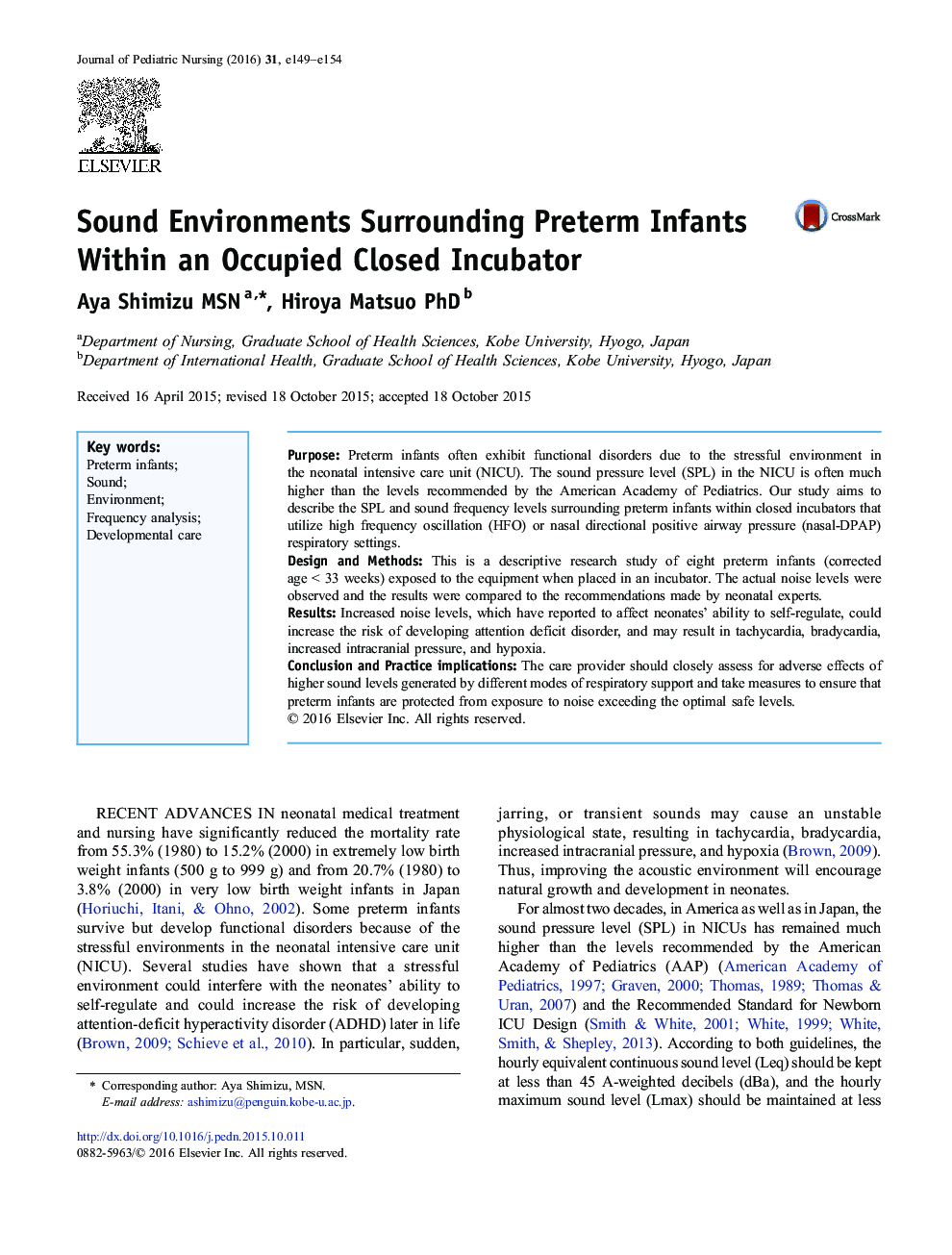| Article ID | Journal | Published Year | Pages | File Type |
|---|---|---|---|---|
| 2664116 | Journal of Pediatric Nursing | 2016 | 6 Pages |
•Nasal directional positive airway pressure (nasal-DPAP) setting resulted in higher the sound frequency level (SFL) and the sound pressure level (SPL) than high frequency oscillation (HFO) setting.•SPL did not correlate with the corrected age at observation.•High-frequency range in nasal-DPAP was associated with higher SPL.
PurposePreterm infants often exhibit functional disorders due to the stressful environment in the neonatal intensive care unit (NICU). The sound pressure level (SPL) in the NICU is often much higher than the levels recommended by the American Academy of Pediatrics. Our study aims to describe the SPL and sound frequency levels surrounding preterm infants within closed incubators that utilize high frequency oscillation (HFO) or nasal directional positive airway pressure (nasal-DPAP) respiratory settings.Design and MethodsThis is a descriptive research study of eight preterm infants (corrected age < 33 weeks) exposed to the equipment when placed in an incubator. The actual noise levels were observed and the results were compared to the recommendations made by neonatal experts.ResultsIncreased noise levels, which have reported to affect neonates' ability to self-regulate, could increase the risk of developing attention deficit disorder, and may result in tachycardia, bradycardia, increased intracranial pressure, and hypoxia.Conclusion and Practice implicationsThe care provider should closely assess for adverse effects of higher sound levels generated by different modes of respiratory support and take measures to ensure that preterm infants are protected from exposure to noise exceeding the optimal safe levels.
